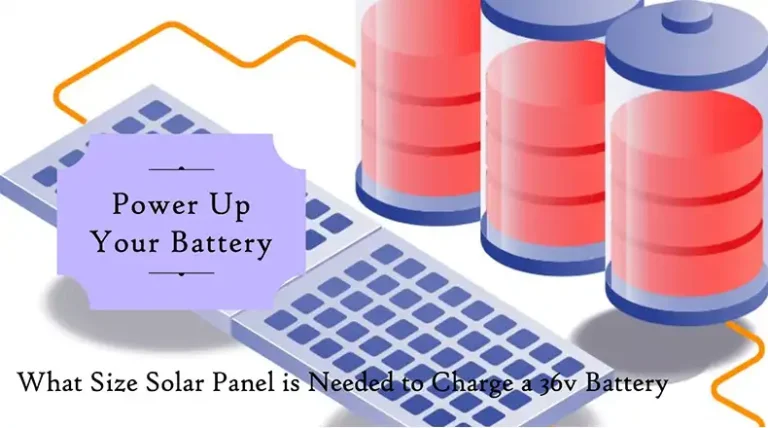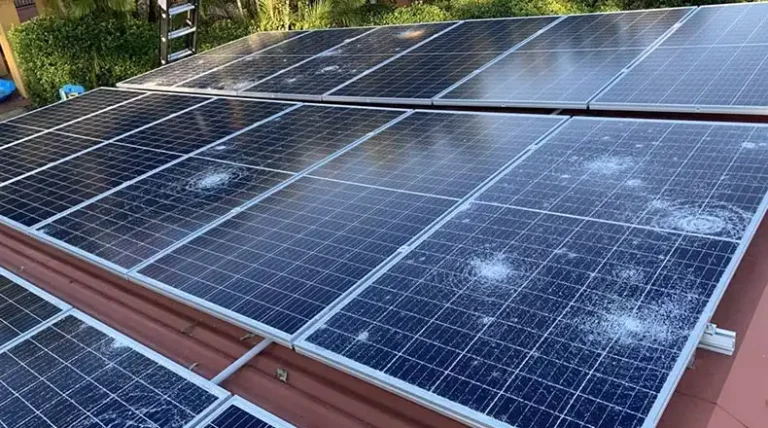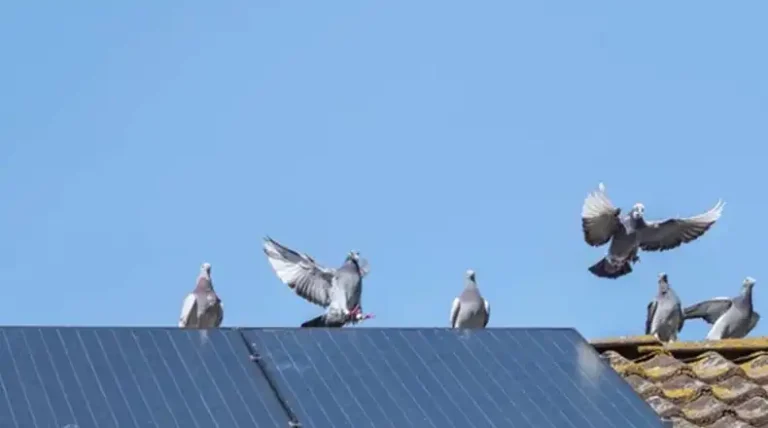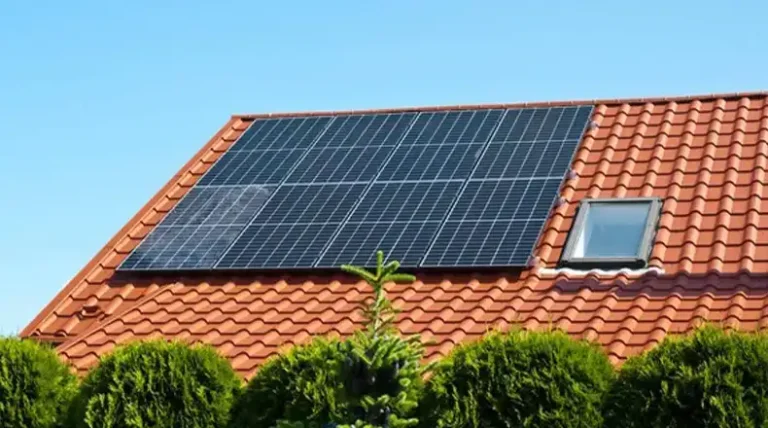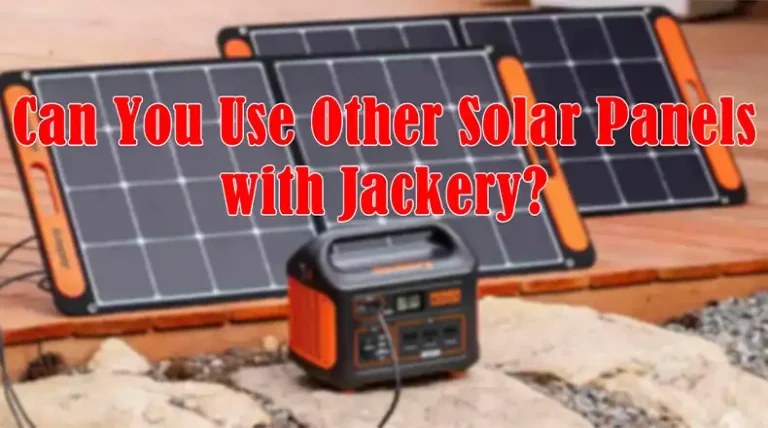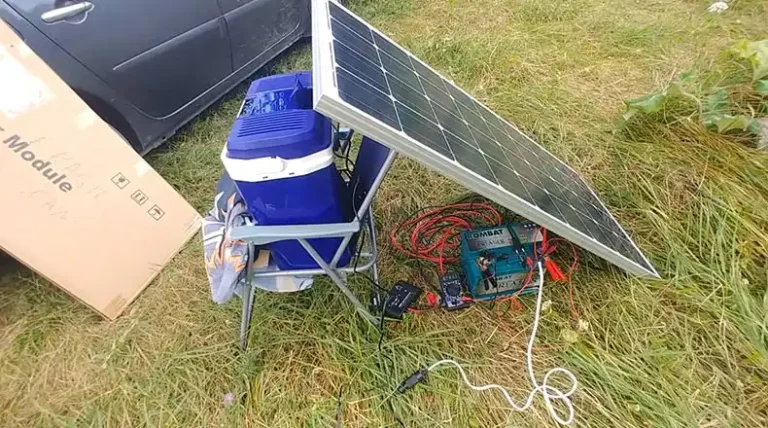Can Solar Panels Blown off Roof | General Discussion
Solar panels have revolutionized the energy landscape, offering a sustainable and eco-friendly alternative. But solar panels can be blown off your roof due to storms or heavy wind.
The factors influencing the potential risk of solar panels being blown off the roof during a storm and explore preventative measures. So if you are planning to install solar panels on your roof make sure to read everything here.
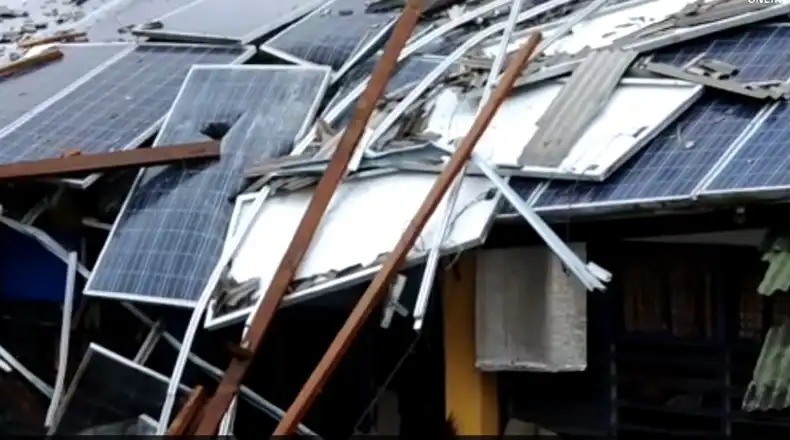
How Do Solar Panels Stay on the Roof?
Solar panels, those sleek contributors to clean energy, stand proudly atop roofs worldwide. But have you ever wondered how they stay put amidst strong winds and unpredictable weather? Let’s unravel the engineering brilliance that keeps these panels firmly grounded.
Mounting Systems Overview
Solar panels owe their stability to the mounting systems that anchor them securely to the roof. Picture it like the foundation of a house, only in this case, it’s about harnessing sunlight.
Ballasted Mounting Systems
Think of ballasted systems as the heavyweight champions of solar panel installation. They use sheer mass to keep panels grounded. Cost-effective? yes, but susceptible to the whims of powerful winds.
Attached Mounting Systems
On the other side of the ring, we have attached systems, securing panels with bolts. It’s like giving your solar panels a sturdy seatbelt; this method ensures a more robust and permanent connection.
Factors Influencing Solar Panel Stability
Despite their photogenic appearance they face challenges from nature’s unpredictability. The stability of these energy warriors hinges on several factors.
Wind Speed Considerations
These panels are designed to brave winds of up to 90 miles per hour or more. Yet, the occasional gale might pose a threat, emphasizing the importance of understanding wind speed dynamics.
Impact of Panel Orientation
Solar panels are like sunbathers seeking the perfect angle. The orientation and angle on the roof aren’t just about aesthetics; they significantly affect stability during gusty winds.
Roof Pitch
The pitch of your roof plays a role in the panel’s ability to stand firm against turbulent weather. Imagine it as the angle of a ship’s sail – get it right, and you sail smoothly; get it wrong, and you might face rough seas.
Wind Speed Considerations
This limit, often around 90 miles per hour, acts as a safeguard. It’s like the panel saying, “I’ll stay put unless things get too breezy.”
Impact of Panel Orientation
The direction and tilt of solar panels aren’t just about catching rays; they also influence their ability to withstand winds. It’s like wearing a hat backward – it might be cool, but it won’t protect you from the wind.
Ensuring Stability: Beyond the Basics
Securing solar panels involves more than just choosing the right mounting system. It’s a blend of smart choices and preventative measures.
Regular Maintenance Practices
Imagine your solar panels as a high-performance car. Regular check-ups ensure everything is in top shape. Inspections by professionals catch loose bolts or aging hardware before they become a problem.
Wind-Resistant Mounting Systems
Investing in the right mounting system is like giving your panels a superhero suit. Opt for systems specifically designed to combat wind forces – it’s the difference between a sturdy shield and a fragile umbrella.
The Role of Installation
Now, imagine your solar panels as a delicate work of art. Improper installation is like hanging it on a flimsy nail – it might hold for a while, but it’s a disaster waiting to happen. Certified professionals ensure a solid foundation.
What Happens to Solar Panels in a Storm
Understanding what happens to solar panels during turbulent weather is crucial for homeowners invested in clean energy. Storms can have impact on these eco-friendly energy generators.
1. Heavy Winds and Displacement
Solar panels are designed to withstand a considerable amount of wind, typically up to 90 miles per hour or more. However, storms can bring gusts that surpass these limits. When wind speeds become excessively high, the panels may face displacement.
The choice of mounting system plays a pivotal role. Ballasted systems, relying on weight, can be more susceptible to uplift during severe winds. Attached systems, secured with bolts, offer a more robust defense against displacement.
2. Hail and Physical Damage
Hail, a common component of severe storms, poses a physical threat to solar panels. The impact can lead to scratches, dents, or even shattered glass surfaces. This damage can compromise the efficiency of the panels and necessitate repairs or replacements.
Some solar panels are designed with tempered glass or protective coatings to mitigate the impact of hail. However, exceptionally large hailstones can still pose a risk.
3. Heavy Rain and Water Infiltration
While solar panels are generally designed to withstand rain, extreme weather conditions can lead to water infiltration. Damaged seals or connections might allow water to penetrate, potentially causing electrical issues or corrosion.
Regular maintenance, including inspections for signs of wear or damage, is crucial. Identifying and addressing issues promptly can prevent water-related complications.
4. Lightning Strikes
Solar panels, protruding structures on rooftops, can attract lightning during storms. While the likelihood of a direct strike is relatively low, a lightning event can cause electrical surges that may impact the solar panel system.
Most solar panel systems are designed with built-in surge protection to minimize the risk of damage during lightning strikes. Ensuring these protective features are in good condition is essential.
5. Flooding and Submersion
Solar panels are typically installed above the roof surface, minimizing the risk of submersion during floods. However, water accumulation on the roof or around the mounting system can still pose challenges.
Proper installation, including elevation and ensuring adequate drainage, can contribute to minimizing the risk of flooding-related issues.
6. Debris Impact
During storms, debris such as branches, roof tiles, or other projectiles can become airborne. These flying objects pose a risk of physical impact on solar panels, potentially causing damage.
While it’s challenging to prevent all debris impact, installing panels away from overhanging trees and conducting regular roof maintenance can reduce the likelihood of such incidents.
DIY Installations and Risks
DIY solar panel installations have gained popularity as homeowners seek to harness clean energy while cutting costs. However, the allure of a DIY approach comes with its share of risks that demand careful consideration.
Since I Love DIY Work
Installing solar panels yourself may seem like a cost-effective and empowering endeavor. Many envision themselves as weekend warriors, scaling rooftops with a sense of accomplishment.
While the enthusiasm is commendable, it’s essential to recognize the potential pitfalls that accompany the DIY route.
Dangers of Poor Installation
The foremost risk in DIY solar panel installations lies in the potential for poor execution. Without the expertise of a certified professional, crucial aspects such as structural integrity, weatherproofing, and electrical connections may fall short of industry standards.
A small misstep during installation can lead to long-term issues, compromising both safety and efficiency.
The Learning Curve
Embarking on a solar installation project without adequate knowledge is akin to navigating uncharted territory.
Understanding the intricacies of solar panels, inverters, and mounting systems requires time and dedication. Overlooking even minor details can result in suboptimal performance and, in worst cases, safety hazards.
The Complexity of Electrical Work
A significant aspect of solar panel installation involves electrical work. Connecting panels to the electrical grid demands a profound understanding of local building codes and safety standards.
Mishandling electrical components poses a severe risk of fire hazards and electrocution. Certified installers undergo rigorous training to navigate these complexities safely.
Recommendations for Safe DIY Installations
For those determined to tread the DIY path, prioritizing safety and thorough research is paramount. Embracing the following recommendations can significantly mitigate the associated risks.
Comprehensive Learning
Before attempting a DIY solar installation, invest time in comprehensive learning. Utilize reputable resources, attend workshops, and seek guidance from experienced solar enthusiasts. A solid foundation of knowledge will empower you to make informed decisions throughout the installation process.
Adherence to Safety Standards
Prioritize safety at every step. Ensure compliance with local building codes, electrical regulations, and manufacturer guidelines. The safety of your installation directly correlates with the safety of your household and property. Cutting corners in this regard can have severe consequences.
Quality Equipment and Materials
Opt for high-quality solar panels, inverters, and mounting hardware. Cutting costs on equipment may seem like a quick saving, but it jeopardizes the long-term performance and reliability of your solar energy system.
Invest in trusted brands and materials to enhance the durability and efficiency of your installation.
Knowing When to Seek Professional Help
While the allure of a DIY project is undeniable, it’s essential to recognize the limits of your expertise. There are instances where seeking professional assistance becomes not just advisable but imperative.
Complex Roof Configurations
Homes with intricate roof designs, multiple angles, or unconventional materials may pose challenges beyond the scope of a DIY installation. Professional installers possess the experience to navigate these complexities seamlessly, ensuring optimal panel placement and structural integrity.
Electrical Grid Integration
Connecting your solar panels to the electrical grid requires precision and compliance with utility regulations. A certified electrician or solar installer understands the nuances of grid integration, minimizing the risk of issues such as power surges or grid instability.
Ways to Enhance Wind Resistance
In the dynamic realm of solar energy, ensuring the durability and stability of solar panels is paramount. One critical aspect is fortifying these panels against the forces of wind.
Let’s explore practical and effective ways to bolster the wind resistance of solar panels, ensuring they stand strong in the face of turbulent weather conditions.
1. Upgrading Mounting Systems
Consider investing in advanced mounting systems that are specifically designed to enhance the wind resistance of solar panels. These systems go beyond basic functionality, providing a robust framework that can withstand the forces exerted during high winds. Upgrading your mounting system is akin to giving your solar panels a sturdy anchor, reducing the risk of displacement.
Tip: Think of it as giving your solar panels a superhero cape – an extra layer of protection against the mighty gusts of wind.
2. Aerodynamic Designs for Solar Arrays
Incorporating aerodynamic features into the design of your solar arrays can make a substantial difference in wind resistance.
By reducing wind resistance, these streamlined designs minimize the impact of turbulent weather on your solar panels. It’s like giving your panels a sleek, wind-cheating makeover to help them cut through the air effortlessly.
Fun Fact: Imagine your solar panels as the Formula 1 cars of the renewable energy world, engineered for optimal performance even in challenging conditions.
3. Regular Maintenance Practices
Consistent and thorough maintenance is key to preserving the wind resistance of your solar panels. Regular inspections by qualified professionals ensure that all components, from bolts to mounting hardware, remain in top-notch condition.
Think of it as giving your solar panels a spa day – pampering them to ensure they’re in peak form and ready to face any storm that comes their way.
Humor Injection: Just like a well-maintained car handles the road better, well-maintained solar panels handle the wind better.
Recurring Questions
Q1: How do mounting systems contribute to wind resistance?
A1: Mounting systems play a crucial role in securing solar panels to the roof. Upgrading to advanced systems enhances stability during high winds, reducing the risk of displacement.
Q2: What are aerodynamic designs for solar arrays, and how do they help?
A2: Aerodynamic designs streamline the shape of solar panels, reducing wind resistance. Think of it as giving your panels a sleek makeover to navigate through strong winds more effectively.
Q3: Why is regular maintenance important for wind resistance?
A3: Regular maintenance ensures all components, from bolts to mounting hardware, are in optimal condition. This proactive approach is like giving your solar panels a spa day to ensure they’re ready to face any storm.
Q4: Can I enhance wind resistance without upgrading my mounting system?
A4: While upgrading is highly recommended, other measures like proper installation and routine maintenance also contribute to wind resistance. However, upgrading your mounting system provides an added layer of protection.
Q5: Are there specific wind speeds that solar panels can withstand?
A5: Generally, solar panels are designed to withstand wind speeds of up to 90 miles per hour or more. Upgrading mounting systems and choosing aerodynamic designs can further enhance this resistance.
Q6: Do these strategies work for all types of solar panels?
A6: Yes, the strategies mentioned, such as upgrading mounting systems and incorporating aerodynamic designs, are applicable across various types of solar panels. However, it’s essential to consider specific recommendations from your panel manufacturer.
Q7: Is there an immediate impact on energy production when enhancing wind resistance?
A7: The impact on energy production is minimal, if any. Upgrading mounting systems and incorporating aerodynamic features focus on stability without compromising energy efficiency.
Q8: Can I perform maintenance on my solar panels myself, or should I hire a professional?
A8: While some basic checks can be done by homeowners, it’s recommended to hire a qualified professional for routine maintenance. Professionals have the expertise to identify and address issues effectively.
Q9: How often should I inspect my solar panels for wind resistance?
A9: Regular inspections, ideally at least once a year, are crucial for maintaining wind resistance. Additionally, it’s advisable to schedule inspections after severe weather events to ensure the system’s integrity.
Q10: Are there government incentives for upgrading solar panel wind resistance?
A10: While specific incentives may vary, some regions offer incentives for adopting resilient and sustainable solar practices. Check with local authorities or your solar provider for information on available incentives
Our Thoughts
The safety and stability of solar panels during storms hinge on various factors, from installation methods to the choice of mounting systems.
By understanding these elements and implementing preventative measures, homeowners can ensure their solar investments stand resilient in the face of adverse weather conditions. Embracing best practices and staying informed are key to a sustainable and secure solar energy future

